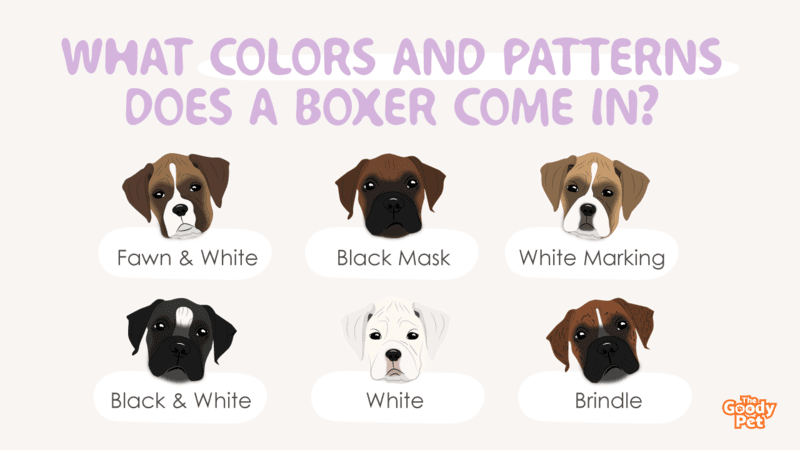Boxers are easily some of the sweetest dogs. They are friendly, playful, protective, and super gentle. These are just a few of their awesome traits that make them perfect companions and family pets.
A sweet personality is not all that Boxer dogs bring to the table. Boxers occur in different colors and patterns including 3 colors and 2 patterns that we shall look into shortly. We shall also take a closer look at their signature black mask marking.
That way, you can better understand what to expect from this beautiful breed from the mystical White Boxer to the feisty Brindle Boxer varieties.
6. Brindle
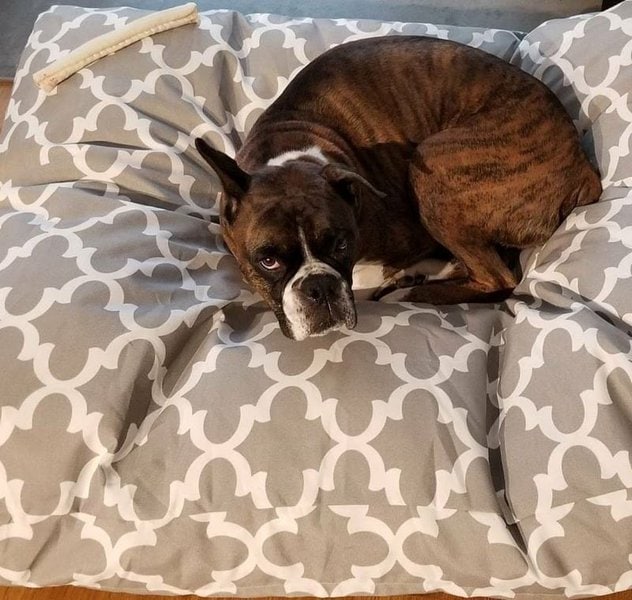
Brindle Boxers have black stripes on a commonly fawn base coat. This gives the cute and gentle-natured dogs an ironic fierce and intimidating tiger-like appearance.
The stripes are not always well-defined in all Brindle Boxer dogs. Some may have them as patchy dark markings on a lighter brown or fawn coat.
The Brindle Boxer variety also may have white patches usually on the chest and paws. Finally, you can expect to find the black face mask on most Boxers with brindle coats.
5. White Marking
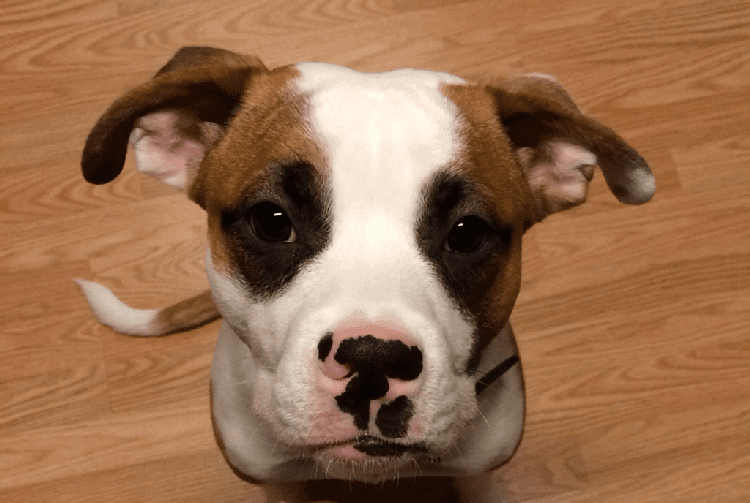
The white markings are the most commonly found pattern in the Boxer dog breed. They appear in combination with solid colors like fawn or black.
More often than not, the predominant, dark color will appear in a saddle pattern covering most of the back, sides, and top of the head. The white markings, on the other hand, are present on the lower aspects of the body like the lower jaw, chest, belly, and paws.
4. Black & White
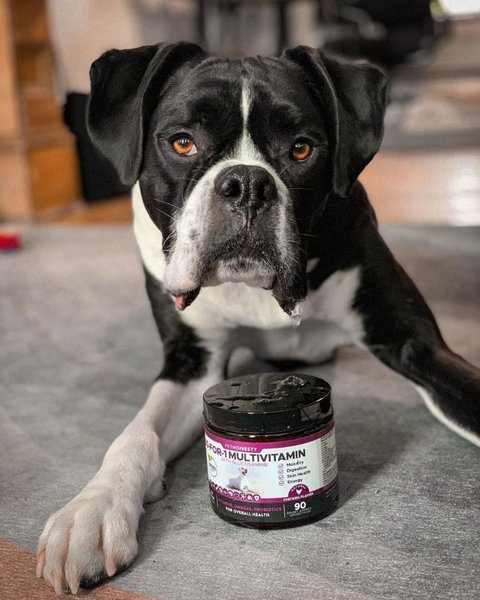
Black and white Boxers are elegant-looking dogs. The combination of a predominantly white coat with white chest, limb, and belly markings makes these doggies look like they are wearing cute, little tuxedos.
Unfortunately, black and white Boxers are not very common. In fact, you may have to settle for mixed breed boxers as the black gene typically does not appear within the Boxer dog breed.
3. White

White Boxer doggies are absolute angles both in their personality and their clean, white aesthetic. The Leucistic variety usually have pigment on the nose, paw pads and eyes.
However, if the white coloring is as a result of Albinism, the Boxer will not have pigment on other parts of the body including the nose and eyes. These kinds of white Boxers therefore end up with a pink nose and in some cases, blue eyes.
2. Fawn & White
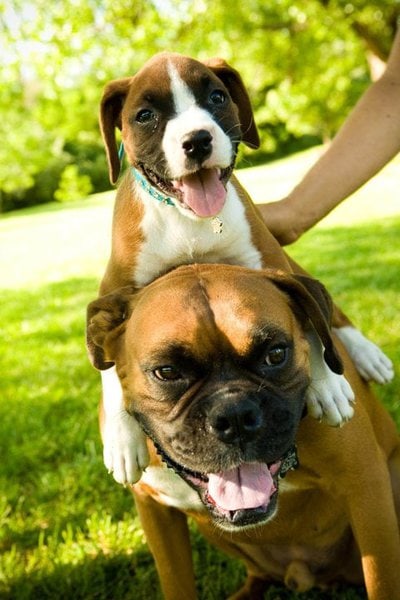
Fawn and White Boxers are the most common variation of the Boxer dog breed in terms of color combination. The fawn part has brown fur that ranges in shades from darker brown to lighter shades like golden or yellowish-brown.
The white markings on the other hand appear as continuous patches mainly over the chest and sometimes on the paws.
Combined with the black face mask, the fawn and white Boxer can technically be classified as a tricolor doggy.
1. Black Mask
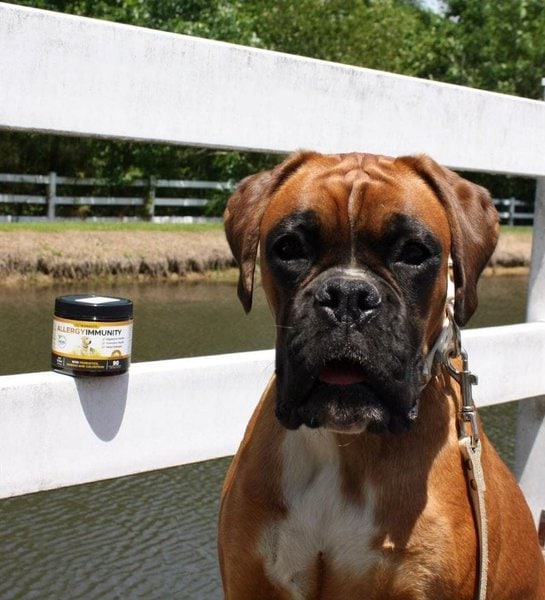
The black mask marking is an iconic feature present in most Boxer dogs. It is a large patch of black fur on the face. It is usually over the snout but may also occur around the eyes.
In some Boxer dogs, there may be patches of white randomly within the white mask.
While the black mask is a standard feature on Boxers, it is not found in all variations and is absent in white Boxers. It may also be difficult to distinguish in black Boxers.
Related Questions
Are Black Boxers Full Blooded? Not all Black Boxers are full-blooded. Boxer dogs do not naturally have a gene for solid black fur. If you find a Black Boxer doggy, they are most likely mixed with another breed that has strong black coat genes. The most commonly used breed in this case is the Black Labrador.
Are Brindle Boxers Rare? Brindle Boxers may not be as common as those with white markings but they are also not rare. This trait is actually one of the standard variations. However, due to the generally exotic and wild-looking aesthetic, Brindle Boxers are presumed to be rare and as a result more expensive.
What Does Flashy Boxer Mean? A flashy Boxer dog is one that has prominent white markings. This may occur with black and white Boxers, fawn and white Boxers, and even Brindle boxers. The white markings are very distinct and cover a large area on the face, chest, abdomen, and limbs. However, the darker coat will still be the predominant one covering most of the body.

